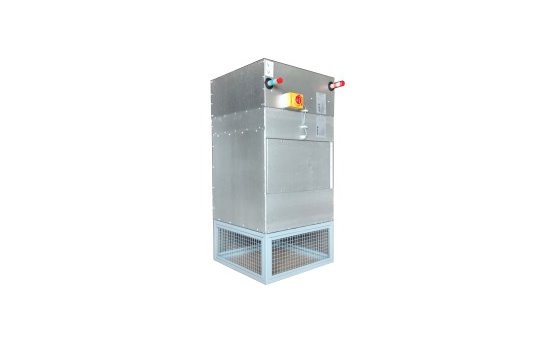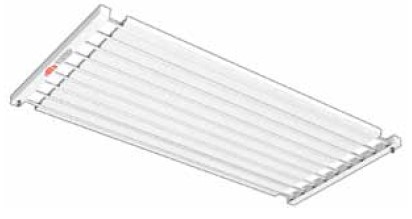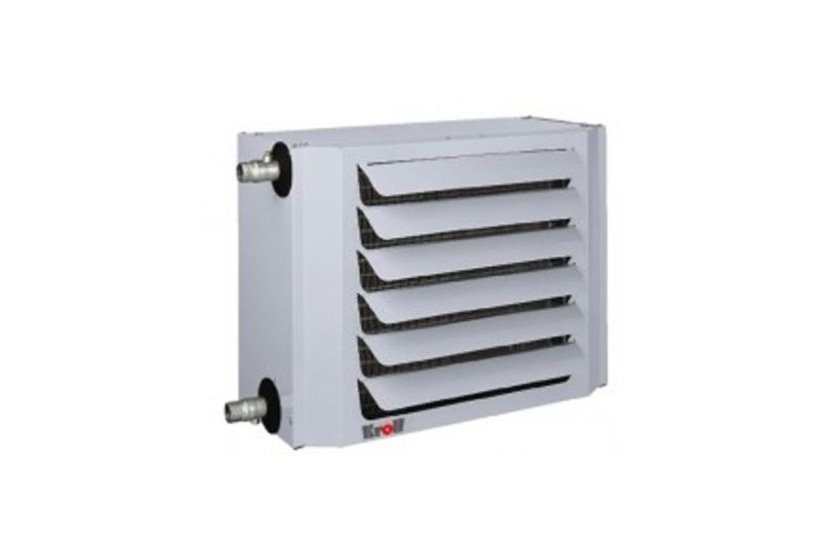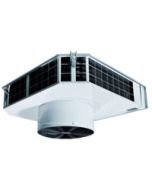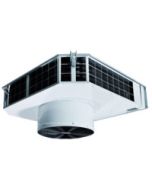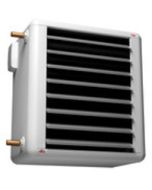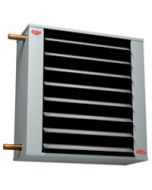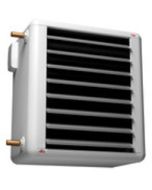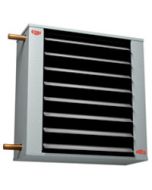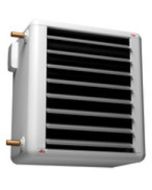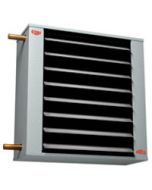Steam Space Heater Compared to LPHW Space Heater
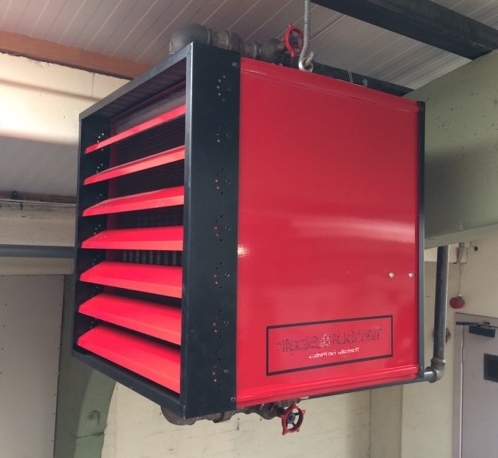
At first glance both types of space heater look pretty similar. A layman glancing up at the heaters supported from brackets on the factory wall would probably guess that they were both heaters, each consisting of a fan thingy to blow air through a radiator thingy. And the layman would be spot on but there are some significant differences.
Steam space heater coil vs LPHW space heater coil
Steam generally flows at higher pressures on flow and return piped systems from steam boilers. In larger industrial sites steam boilers are quite a common heat source and boilers from the main manufacturers including Feroli, Bosch, Byworth and Cochrane are widespread. Piped steam pressures can bas as high as 25 bar, although pressure is more normally in the region of 4-8 bar. It means that the heat transfer coil in the heater has to be able to cope with this pressure and that in comparison with LPHW piped systems, is much higher. LPHW flow and return pipe-work is often less than a bar for ventilated gravity systems and 2-4 bar for pressurised systems. This pressure difference means that the construction of the coil is quite different. The coils in LPHW space heaters are typically quite light in their build and they are tested to lower pressures than steam coils which are normally tested to 25 bar. This basic difference makes the steam space heater heavier than LPHW space heaters. Moreover, the build of the headers in the coil is beefier in the steam heater coils because they also have to tolerate greater temperature variation from ambient to operational temperature, without distortion and warping. The coil on a LPHW fan heater typically has a piped route to connect the ends of the pipes running through the fins. In the steam space heater the finned pipe ends are connected with a common header on both the inlet and outlet.
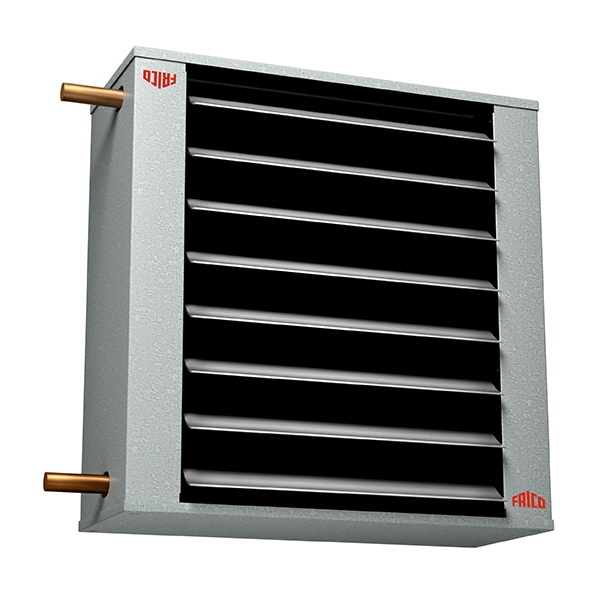
Heater pipe connections
Typically in LPHW space heater the pipe connections will be bare copper pipe, so that they can be connected with standard brass compression fittings. For steam this is not suitable as steam pipe systems are usually in mild steel tube with black iron or galvanised fittings. There are variations in the way of connecting the heaters as well. With LPHW systems it is usual to have a pair of isolation valves for each heater and additionally there may be a 2-way solenoid valve to shut or open the flow through the coil. Alternatively there might be a 3-way valve that diverts the flow either to bypass or through the heater coil. The difference with the steam space heater installation is that there is also usually a condensation trap so that the piped steam that changes state in the pipe and the heater coil, condensing on the relatively cool metallic surfaces, can be drained of. The change in state is an important part of the heating process for steam space heaters. Heat is liberated from the steam firstly as it cools within the gaseous state, secondly as it changes to liquid and then thirdly, but to a lesser extent, as the condensate cools. In a sense this is one of the reasons why steam is often prefered as a heating medium in large industrial applications. It is because for a given size of piped infrastructure more much more heat energy can be carried.
Most LPHW fan heater have the plain pipe connections in the side of the heater, with flow being connected to the upper most connections and return being connected to the bottom of the heater. A steam space heater by convention, will usually have the pipe connections top and bottom of the heater such that the flow is connected the uppermost connection and the return connected to the connection in the underside of the heater. Although this seems to be a convention it not actually a necessary one as space heaters, wether heated by steam or water, can be run in either horizontal airflow (typically mounted to the walls of the area) or vertical air flow (typically for mounting in the mid area of the building).

At Puravent we know our space heaters and supply a wide range of both LPHW space heaters and steam space heaters. We also stock LPHW trench heating which offers many space saving advantages. If you are looking for heaters to hook up to a steam or water boiler then let us help you get the right heaters and controls to suit your application.
Call us on 01729 824108.

